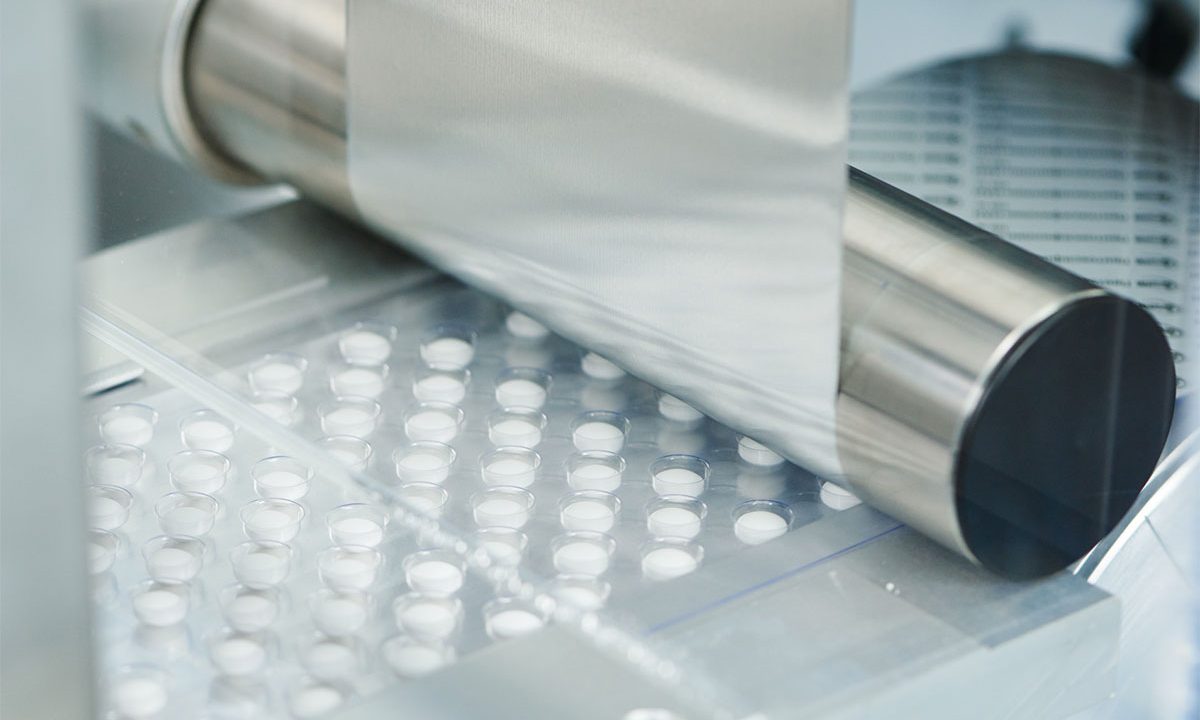The pharmaceutical packaging industry is a readily advancing sector of healthcare. In the past few years pharmaceutical packaging has shown a steady growth of 5-6% over the past few years. And in the years to come, the European pharma packaging is predicted to reach $26 billion a year of turnover. Unlike other packaged goods like food, pharmaceuticals are a much demanding product that have special needs. Pharmaceuticals is an industry controlled by the authorities to insure the safety of the consumers. The product packaging, therefore, has to ensure safety of the pharma product, reliability through transportation, tamper-proof and tamper indications, patient comfort and more than ever child resistance.
With the developments in the day to day lives of people, pharmaceutical packaging has always stood by to keep healthcare safe to certain points. When troubles with child safety showed up with bottles, blister packaging was developed to keep the machine running without accidents. Pharma packaging has come a long way since the world wars and now stands at the face of challenges in providing safety, quality, efficacy, and convenience. Packaging is supposed to provide all round safety to the pharmaceutical products that are volatile as well as to the medical supplies like vitamins and pain relief gels.
Technological advancements in the world are already on par with providing devices to consumers to keep a track of their health and report it to their doctor in real time. So as the health bands and reminder apps work, all kinds of packaging from blisters to syringes are also transforming into a more controlled and safe option. Along with digital enhancements, the global growth of pharmaceuticals also brings the issue of counterfeiting and forgery operations.
Where does Pharmaceutical Packaging Stand?
The current standing of the pharma industry is that globalization is taking over and products are being distributed all across the world. Hence the need for mass customization arises, for use within different regulations. And more than ever the need for sustainable packaging is crucial and is being supported by the whole healthcare industry. The fast-paced world and globalization also bring about duplicacy which is not only harmful to the industry but also to the patients and consumers. The packaging industry has had some efficient development in countering the above issues. There are packaging solutions that are recyclable, make packaging less energy consuming and are highly customizable to be differentiated from the competitors and the duplicated products.
But with the emerging needs of the market, the tools need to be updated as well, to meet the packaging needs. In the case of pills, every blister packing machine must be in accordance with the safety standards and shall meet the various customization needs. With PVC blister packing, the machine must be efficient enough to create the right blister that is tamper proof and in case of tamper shows clear signs. With alu alu blister packing, every machine needs to be ready for larger production capacity while being error proof with pressure. Alu alu blister packing machines are being used largely to package all controlled and prescription capsules so failing with the safety factor can be lethal to a curious child or patient with self-care. Which is why blister machines can now be automated while reducing human error. Blister packing machine manufacturers like Accupack make sure to reduce human errors by adding direct head control through remote accessibility and operator friendly features.
To get into the requirements from pharmaceutical packaging is the best way to understand- what the industry is providing and how it is developing its own provisions?
1. Containment
The primary need from any packaging product is containment but there are different kinds to it. Most cotton stick buds for example have an easy open resealable pouch, while children’s dietary products are double packed with a heat sealed foil pack and eternel cartoning. Pharmaceutical pills are packed either in blister packs or in plastic bottles if packed in the US.
Between blisters and bottles for tablets and capsules, blisters are the standard packaging choice through Europe and Asia, the biggest pharmaceutical market in all continents. They provide proper containment for each pill and make sure that the pills aren’t exposed to environmental factors till used by the consumer. Blisters packaging designs, especially with alu alu blisters, are now being advanced towards sealing techniques and added layers that restrict moisture and air efficiently. PVC blisters are being shaped to contain pills in vacuum along with UV repellent layers to keep the drug cool.
2. Protection
Along with containment of the medicines, packaging shall also provide protection. Most drugs packed in pill and capsule form are volatile, outside of the packaging. When a drug is exposed to external factors like light, moisture, oxygen and bacterial contamination, it gets altered in form and doesn’t remain safe for use. Along with external factors, pharmaceutical packaging shall also provide efficient protection from mechanical shocks and tampering. Hence, every packaging shall have a tamper-proof build that provides proof of tamper. Which in turn tells the retailers and patients to not use a pack of medicine if certain proofs of tamper are found.
3. Presentation and Information
Packaging does hold the pharmaceutical, what it also includes is patient awareness, branding and crucial information about the drug. Even with blister packing, the machine remains the same but the format parts keep changing according to the product and market. Which is why every pharma brand keeps the blisters unique and recognisable even without the outer box. Patient information is an important step towards healthcare. The patient or any user taking over the counter medicine has the right to know what they’re putting into their system.
4. Convenience
The patient taking medication is already going through inconvenience, so the packaging must put ease to it. The pace of the world doesn’t allow everyone to remember all the kinds of pills they have to take. Especially if a treatment is spread over a course of months, there might be some medications that are to be taken in a schedule or once in a number of days. In that situation, elders are the ones that lose track of medicines. There are now a lot of technological advancements in providing relief to them.
Bottle packaging has been inefficient in a lot of cases where pills are forgotten or are spilled and then aren’t fit for consumption. PVC and alu alu blister packing uses heat sealing and cold forming machine operations that conveniently pack every pill in separate blisters giving the user a track of each pill. No spillage of pills and if the package slips off, the pills inside are still usable. Blister packaging is being adapted by a lot of pharma economies because of its efficient packaging and customization benefits. Blister packing machines from engineers and packaging solutions like Accupack are highly customizable with essential operator free blistering sessions with tool-less format part changeovers.
Due to the advancement in digital manufacturing tech, blister packing machines can be equipped with operational intelligence. If a blister packing line has a broken seal or blister the machine recognises the error and reports in real time. Operational intelligence in pharma packaging prevents defective medication even before the medicine goes out. The need arrives from the shifting industry standards of patient centric packaging.
Pharmaceutical packaging is moving towards being a heavily globalized industry. The majority of regulatory bodies have made it a requirement that pharmaceutical packaging be made sustainable for the future. With the past years’ records filled with accidental deaths and hospitalizations of children, child safety is no more an added feature but a standard one. Considering these factors, pharmaceutical packaging is developing with the world. With hundreds of customizable format parts and child safety packaging, blister machine suppliers in India and Asia like Accupack, can help with the growing competition.



